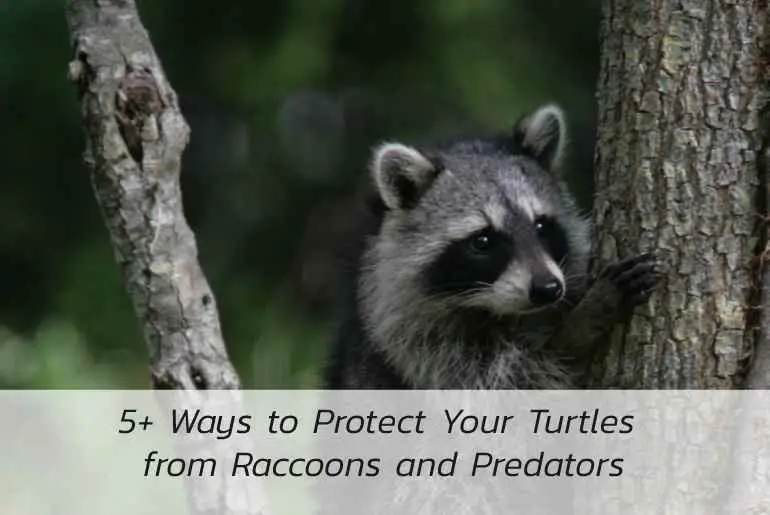Do you have a yellow-bellied slider turtle (or multiple turtles) as a pet? If so, you may be wondering how long they can stay out of the water before they start to experience health problems. In this blog post, we will explore the different factors that can affect how long a yellow-bellied slider can go without water. We will also provide some tips on how to keep your turtle healthy and hydrated!
Yellow-bellied slider turtles require a lot of water to stay healthy, and if they are kept out of the water for too long, they can become very sick. We will discuss the various reasons why your turtle may be staying out of the water and provide tips on how to correct the problem.
How Long Can Yellow Belly Turtles Stay Out Of Water?
As any turtle owner knows, these reptiles are semi-aquatic creatures that spend a lot of their time in the water. However, they can also survive out of the water for extended periods of time, provided the environment is suitable.
In general, yellow-bellied turtles can survive out of water for 6 to 8 hours, though this may vary depending on the climate. For example, if the air is very dry, they will need to rehydrate more frequently and may not be able to stay out of water for as long.
Similarly, extreme temperatures can also impact how long they can survive without access to water.
In general, milder climates will allow them to stay out of water for longer periods of time. With proper care and attention, yellow-bellied turtles can make interesting and rewarding pets.
Why Turtles Must Stay In The Water?
Turtles must stay in the water to maintain their body temperature and prevent dehydration. If they are kept out of the water for too long, they will start to experience health problems.
Dehydration is a serious concern for turtles, as it can lead to organ damage and even death. When a turtle is dehydrated, its body cannot function properly, and it will start to shut down.
Turtles also need to stay in the water to maintain their shell. The shell is made up of keratin, which is a protein that helps to keep the turtle’s body strong and healthy.
If a turtle is kept out of the water for too long, the shell will start to dry out and crack. This can be very painful for the turtle and may lead to infection.
How To Keep Your Turtle Healthy And Hydrated?
There are several things you can do to keep your turtle healthy and hydrated. First, make sure that their enclosure is large enough for them to move around freely.
Turtles need a lot of space to exercise and explore, so a small tank is not suitable. Second, fill their enclosure with clean, fresh water and provide them with a basking area.
The basking area should be warm and sunny, as turtles need to bask in order to regulate their body temperature. Finally, give your turtle plenty of time to exercise and explore its enclosure.
Turtles are active creatures and need to be able to move around freely. By providing them with a large enclosure and plenty of time to exercise, you can help keep them healthy and hydrated.
How Long Can Yellow-bellied Turtles Be Underwater?
As we mentioned before, yellow-bellied turtles are semi-aquatic creatures that spend a lot of their time in the water. So, how long can they stay underwater?
In general, yellow-bellied turtles can stay submerged for 30 to 60 minutes, though this may vary depending on the temperature of the water.
If the water is too cold, they will not be able to stay submerged for as long. Conversely, if the water is too warm, they will need to come up for air more frequently.
It is important to provide your turtle with a suitable environment that meets its needs. By doing so, you can help them stay healthy and happy.
Have you ever wondered how long a slider turtle can stay underwater? Thanks to their unique physiology, slider turtles can remain submerged for long periods of time – up to 6-8 months! This ability is made possible by cloacal respiration, a process whereby the turtle exchanges oxygen and carbon dioxide using the high density of blood vessels in their cloaca (butt).
While most animals require air to breathe, slider turtles are able to extract oxygen from water using this specialized technique. This adaptation has allowed them to survive mass extinctions and continue thriving today. So next time you see a turtle basking in the sun, remember that they are truly masters of land AND sea!
Cloacal respiration is a bizarre but fascinating breathing technique that allows some turtles to stay underwater for months at a time. Also known as butt breathing, cloacal respiration involves absorbing oxygen through the high density of blood vessels in the cloaca, or butt.
This allows the turtles to survive without access to air for long periods of time, which is handy for hibernating underwater or surviving mass extinctions. So next time you see a turtle basking in the sun, remember that it’s thanks to cloacal respiration that these creatures are able to stay alive and thriving, despite being seemingly out of their element.
How Long Can Yellow-Bellied Slider Turtles Live Without Water?
Yellow-bellied slider turtles are semi-aquatic creatures, which means they need both land and water to survive. However, if their natural habitat is unavailable, these turtles can live for several months without access to water.
This is because yellow-bellied slider turtles are able to extract moisture from the food they eat. This adaptation allows them to survive in dry conditions for long periods of time.
While yellow-bellied slider turtles can live without water, it is not ideal, and they will eventually need to access a source of fresh water. If you are keeping these turtles as pets, make sure to provide them with a large enclosure that includes both land and water.
How Long Can Baby Yellow-Bellied Slider Turtles Live Without Water?
Baby yellow-bellied slider turtles are even more reliant on the water than their adult counterparts. This is because they have not yet developed the ability to extract moisture from their food.
As a result, baby turtles need to access a source of fresh water daily in order to stay hydrated. If you are keeping baby turtles as pets, it is important to provide them with a large enclosure that includes both land and water.
You should also perform regular water changes to ensure the water is clean and free of harmful bacteria. By taking these steps, you can help your baby turtles stay healthy and happy.
Do Yellow-Bellied Slider Turtles Need Water All The Time?
No, yellow-bellied slider turtles do not need water all the time. These turtles are semi-aquatic creatures, which means they need both land and water to survive.
While they can extract moisture from their food, it is not ideal for them to live without access to water. If you are keeping these turtles as pets, make sure to provide them with a large enclosure that includes both land and water.
Why Is My Yellow-Bellied Slider Staying Out Of Water?
There are several reasons why your yellow-bellied slider turtle may be staying out of the water. It could be that the water is too cold, the water parameters are incorrect, or there may be mean tankmates.
Another possibility is that your turtle is pregnant. Female turtles will often stay on land to build a nest and lay their eggs. If you think this may be the case, consult a veterinarian for advice on how to best care for your turtle during this time.
Incorrect Water Temperature
One of the most common reasons why turtles stay out of the water is because the temperature is too cold. Turtles are ectothermic, which means they rely on their environment to regulate their body temperature.
If the water in their enclosure is too cold, turtles will often be basking in order to warm up. This can be a problem in the winter months when the temperature outside begins to drop.
To keep your turtles happy and healthy, it is important to maintain the water temperature in their enclosure at a consistent level. You can do this by using an aquarium heater or basking light.
Wrong Water Parameters
Another common reason why turtles stay out of the water is that the water parameters are incorrect. This can include the pH, temperature, or hardness of the water.
If the water in your turtle’s enclosure is not properly balanced, they may become stressed and stop using the water altogether. This can lead to serious health problems, so it is important to make sure the water in their enclosure is always clean and at the correct pH level.
You can test the water in your turtle’s enclosure with a simple water testing kit. This will help you ensure that the water is always safe for your turtles to use.
API 5-IN-1 TEST STRIPS Freshwater and Saltwater Aquarium Test Strips 100-Count Box is easy to use and cheap to carry out. There are many strips in one which you can use for future too.
Mean Tankmates
Turtles are social creatures and do best when they are kept with other turtles. However, if they are kept with mean tankmates, they may become stressed and stop using the water.
Mean tankmates can include other turtles that are aggressive or bullies. They can also include fish that nip at the turtles or try to eat their food. If you think your turtle’s tankmates are causing them stress, it is important to remove them from the enclosure.
Pregnancy
Another reason why your turtle may be staying out of the water is that they are pregnant. Female turtles will often stay on land to build a nest and lay their eggs.
If you think your turtle is pregnant, it is important to consult a veterinarian for advice on how to best care for them during this time.
Final Words
In conclusion, yellow-bellied turtles can stay out of water for extended periods of time, provided the environment is suitable. They need to stay in the water to maintain their body temperature and prevent dehydration.
If you provide them with a large enclosure and plenty of time to exercise, you can help keep them healthy and happy. Thank you for reading!
We hope you enjoyed this post. If you have any questions or comments, please feel free to leave them below. We always love hearing from our readers!






